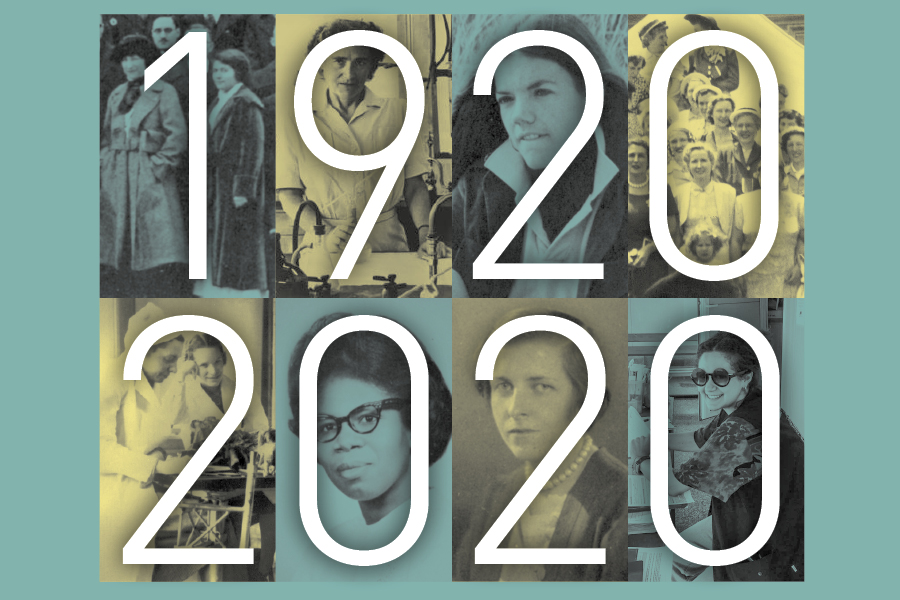
One century, bracketed by two global pandemics. Between 1920 and 2020, women rose from second-class citizenship to take the reins as pioneering leaders in medicine, among all other areas of public life. Decade by decade, the lives of women medical graduates from the Perelman School of Medicine offer snapshots of that shift.
By Carol Benenson Perloff
A century ago, the United States was embroiled in change. The nation had recently weathered the 1918 flu pandemic and welcomed home its veterans from the Great War. The pandemic had drafted Penn medical students from the classes of 1919 and 1920 into volunteer medical service as the deadly disease ravaged Philadelphia.
In August 1920, ratification of the 19th amendment to the U.S. Constitution gave women the right to vote. Progressive-era movements opened up educational and career opportunities.
The University of Pennsylvania School of Medicine opened doors to women shortly before 1920—but for several decades to come, women made up only a tiny sliver of the medical student population and the medical profession writ large. One hundred years later, women comprised 54 percent of the graduating Class of 2020, a class moving on amidst the COVID-19 pandemic. In the decades between the two pandemics, women medical students, physicians, and biomedical scientists have faced shifting challenges in pursuit of distinguished careers and lives. Each one has a story.
1849 | Elizabeth Blackwell, MD,
becomes the first woman
in the United States with a
medical degree from
Geneva Medical College in
New York.
1914 | University of Pennsylvania
Trustees make the School of
Medicine co-educational.
Three women matriculate in
the fall of 1914, of whom two
graduate in 1918.
1917
Clara Hillesheim, a transfer
student, becomes the first
woman to receive a Penn
medical diploma, but she
does not ultimately remain
in a medical career. The
1940 U.S. Census lists
Hillesheim as living with her
younger brother, a farmer
and “head of household.”
1920: The Medical Missionary
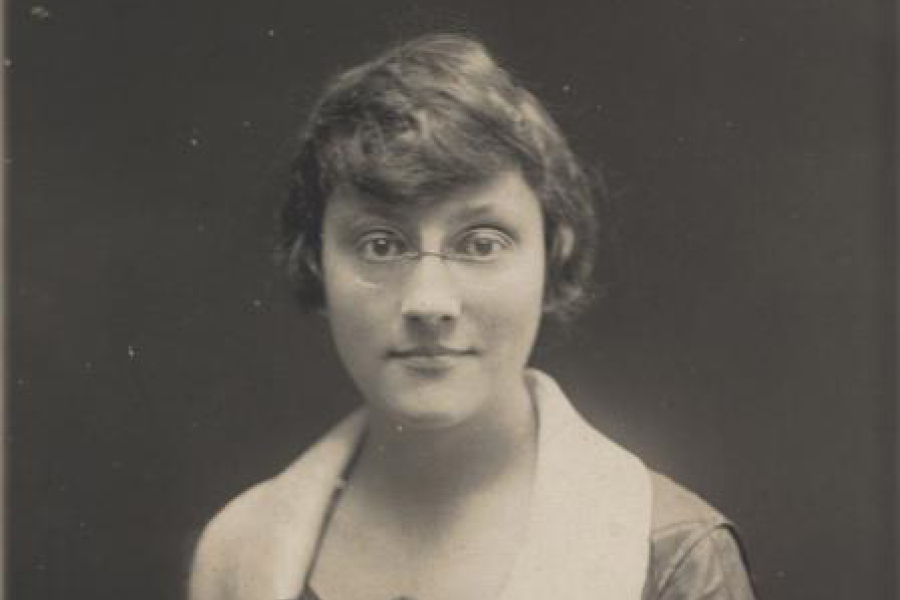
Penn awarded Julia Morgan, MD, her medical degree just two months before ratification of the 19th amendment gave her the right to vote.
Morgan hailed from Carlisle, Pa., the daughter of James Henry Morgan, president of Dickinson College. Sights set on practicing medicine in China after her graduation from Dickinson in 1911, Morgan taught high school to earn money for medical school and obtained a master’s degree in science. She matriculated at Penn in 1916 as one of four women in the class of 1920.
As she began her third year in September 1918, the influenza pandemic struck Philadelphia. With roughly 75 percent of the city’s physicians and nurses deployed overseas in WWI hospitals, the School of Medicine called on all third- and fourth-year students to volunteer in 19 hospitals throughout Philadelphia. With essentially no training in treating influenza, Morgan and her classmates assumed the responsibilities of nurses while fourth-year students stepped up as de facto interns during the crisis.
Morgan didn’t shy away from her male-dominated class. She took on the job of class historian for three years and, if the 1919 Scope yearbook is any indication, earned her classmates’ respect:
There is one girl in our class
Who’s surely bound to fool ya.
When it comes to Ophthalmology,
You’d better page “Our Julia.”
After her internship at the Hospital of the University of Pennsylvania (HUP), Morgan worked a few months at a tuberculosis sanitarium near Harrisburg, before departing to be a medical missionary—a practitioner and a teacher in China.
Morgan learned Mandarin, a necessity for teaching internal medicine and tropical medicine at Shantung Christian University Medical School (also known as Cheeloo) in Tsinan. (Coincidentally, James Boyd Neal, MD, an 1883 Penn medical alumnus, founded the medical school and served as dean from 1909 to 1919.) She prepared students to treat patients in rural areas, and she taught them to make homemade instruments to treat tuberculosis, according to a Dickinson College student’s 2010 honors thesis about Morgan. She practiced medicine at several hospitals and, in the 1930s, was appointed administrator of Cheloo University Hospital.
Periodic yearlong furloughs brought Morgan back to Pennsylvania. In 1927-1928, an anti-Christian movement in China precipitated her evacuation; she spent part of that furlough studying tuberculosis and tropical diseases, including time in India.
Morgan returned to Penn in 1942 for the short twilight of her career. In 1948, the 57-year-old professor of tropical medicine and physical diagnosis died at HUP. Her commitment to women in medicine outlived her; she bequeathed a generous sum to the United Board for Christian Colleges in China for the medical education of Chinese women.
1920 | The first women are appointed to Penn’s medical
school faculty: Marion Hague Rea, MD (wife of Penn
pathologist Baldwin Lucke), medical director for
women students; Anne Thomas, MD, in Medicine;
and Annie E. Taft, MD, in Neurology.
1930: A Preventive Health Maven in a Man’s World
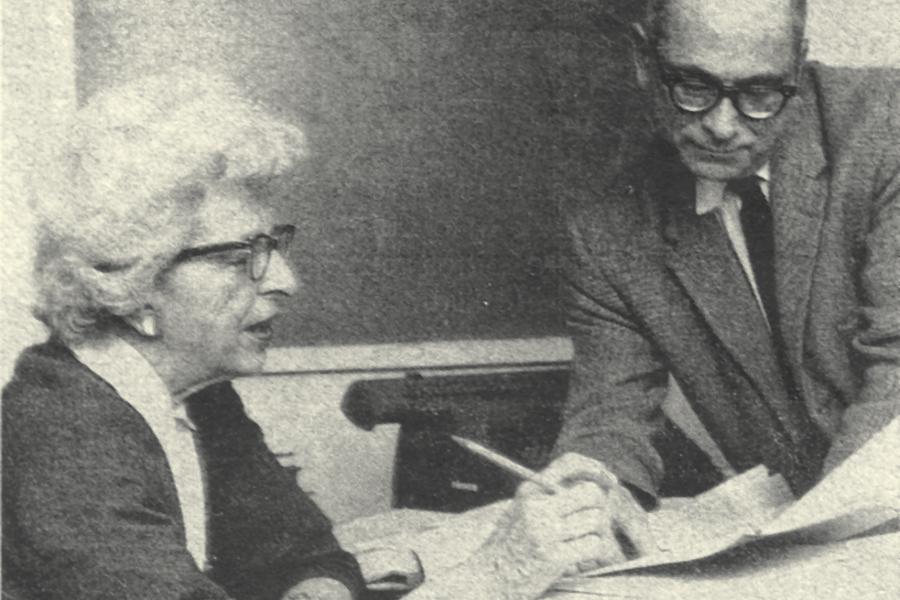
Katharine O’Shea Elsom, MD (1903-1996)
“We were a doughty band, not noted for our physical beauty, not greatly caring,” Katharine Elsom wrote of her three female medical school classmates in the class of 1930, in a letter to her granddaughter in 1984. “Our goal was firmly fixed on making it through to a license to practice medicine. That end was not easily achieved. From the outset we, individually, were targets for harassment by many of our instructors.” An excellent student, she succeeded nonetheless and was lauded in the 1930 Scope as “Best Crammer.”
In 1931, after completing her internship at Abington Memorial Hospital, she established a private practice and joined the Penn faculty as an assistant instructor, the start of a long career in teaching and research at Penn that culminated as associate professor of Research Medicine.
In 1928, while a medical student known as “Kay” O’Shea, she married kindergarten classmate Kendall Adams Elsom, MD, who also went on to a career on the Penn faculty and with whom she sometimes collaborated on research. They had their first child in 1939.
Katharine Elsom lectured to medical students in the Department of Medicine, served as staff physician on HUP’s medical wards, and conducted independent research. Working within the Gastro-Intestinal Section of the Medical Clinic at HUP, she became the first to demonstrate the impact of vitamin B deficiency in humans, publishing her clinical results in 1934. She studied the effects of vitamin deficiency on the intestine, as well as on human mental capacity.
Elsom earned a master’s degree in Medical Administration from Columbia University in 1957, and that same year she received a Rockefeller Foundation fellowship and, with two other medical faculty members and a Wharton statistics professor, started work on the Periodic Health Examination Research Project. Based at Penn and supported by a U.S. Public Health Service grant, the study evaluated the effectiveness of periodic health examinations and what should be included in them. Son Kendall A. Elsom Jr. noted in her obituary, “She was way ahead of her time in her concern and knowledge of public health and preventive medicine.”
1932 | Florence Barbara Seibert, PhD, is appointed assistant professor of Biochemistry in the University’s Henry Phipps Institute, making her the first woman on the medical school’s standing faculty; she becomes the first woman in the medical school with tenure in 1937.
1940: Metabolic Disease Authority and Medical Family Matriarch
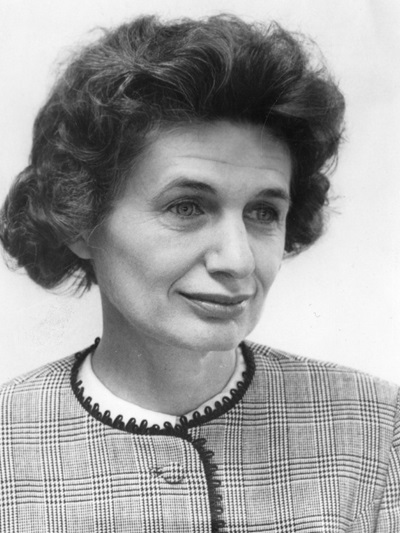
Selma Eleanor Snyderman, MD (1916-2012)
Medicine runs in the family. The daughter of a pediatrician, not only did Selma Eleanor Snyderman become a physician, so did her younger brother Reuven Snyderman, MD’46, her husband Joseph Schein, MD’41, their two sons, Roland and Oliver Schein, and soon granddaughter and current Penn medical student, Yvette Schein. The family’s medical matriarch, who spent most of her career at New York University (NYU), earned international recognition for her work on infant nutrition and the treatment of various inborn genetic metabolic diseases.
After receiving a Penn undergraduate degree in just three years in 1936, Snyderman enrolled in the medical school. There she met Joseph Schein, a humanities major whom she helped with chemistry during his first year. They married just before her final year of medical school. She was one of five women in her class of 130 and wrote two theses: “Experimental Cancer due to Hormones” and “Isohemolysins in Human Blood.” Although Snyderman graduated at the top of the class, the Alpha Omega Alpha medical honor society did not include her among its 1940 honorees—the society first allowed women in 1941. On her path to pediatrics, she trained at Philadelphia’s Jewish Hospital (later known as Albert Einstein Medical Center) and then at Bellevue Hospital and NYU Medical School in New York City.
With hard work and determination, Snyderman overcame obstacles in the path of a woman making her way in medicine in the 1940s. Yvette Schein shares her 105-year-old grandfather’s perspective:
She was not someone who would ever come home and talk about any experiences of discrimination based on gender. Any suggestion of inability or inferiority would only deepen her quiet determination. She was humble and didn’t have to shout her knowledge to be respected for her work. She did all this and still made dinner for her family every night after work.
In 1946, Snyderman began almost 50 years on the pediatrics faculty at NYU, rising to the rank of professor of Pediatrics. Her studies of amino acid metabolism established the daily requirements of amino acids in the diets of healthy and premature newborns. She developed special diets to treat infants and children with genetic metabolic disorders including pediatric phenylketonuria (PKU) and the then-fatal maple syrup disease, enabling them to grow into healthy adults. Snyderman directed Bellevue Hospital’s Metabolic Disease Center, established in 1965 as the first center of its kind for treating these rare diseases. She served as founding vice president and second president of the Society for Inherited Metabolic Disorders.
In 1995, at age 78, Snyderman was recruited by Mount Sinai School of Medicine to help build their clinical and research programs in metabolic disorders. Loyal by nature, she accepted the position of professor of Human Genetics and Pediatrics with the condition that a 65-year-old colleague, and someone with whom she had worked for many years, came with her.
Snyderman received PSOM’s 2004 Distinguished Graduate Award for 60 years of contributions to science and medicine. Meanwhile, she encouraged her five granddaughters to choose any path they wanted. At age three, when Yvette said she wanted to be an alien when she grew up, the pioneering scientist-physician laughed and responded, “What does that look like to you and how can we help make that happen?”
1945 | The University of Pennsylvania awards the Graduate School of Medicine’s degree of Master of Medical Science to Helen Octavia Dickens, MD, the first African American woman to earn the M.Sc. (Med.) degree at Penn.
1950: Penn’s First Mammographer
Friedman (fourth from left in the front row) was a member of the
Alpha Omega Alpha medical honor society.
Lois Adele Kynette Friedman, MD (1923-2012)
She grew up in the small town of Alice, Texas, the child of a poor single mother with little education. They resided in an intergenerational home with her great-grandmother, who was living off her Civil War widow’s pension. Self-driven, Adele Kynette studied chemistry at the University of Texas, Austin, where she conducted cancer research in the University’s Biochemical Institute. A mentor saw her gift for science and planted the seeds of medical school. In the fall of 1946, Adele Kynette made her way to Penn, alongside men attending under the GI Bill. She became one of 12 women to receive a medical degree in 1950, graduating with distinction as a member of the Alpha Omega Alpha medical honor society.
The 1950s was a decade in which American society largely saw a woman’s place as in the home, a time when the baby boom was booming. For Adele Kynette Friedman, MD, Penn’s Department of Radiology would become her professional home. (In 1956, she married Sidney Friedman, MD’43, a pediatric cardiologist at Children’s Hospital of Philadelphia; Penn radiologist Philip Hodes, MD, gave away the bride.) She became the second woman to complete a radiology residency at Penn and then joined the faculty.
Until her retirement as associate professor in 1989, Friedman spent most of her time as an outpatient clinician practicing general radiology, and an educator, teaching a popular elective course on radiology. She also earned the title of Penn’s first mammographer. When mammography was a developing method and people were yet unsure of its value, Eugene Pendergrass, MD, chair of Radiology (1939-1961), selected Friedman to obtain the needed training and introduce this technique at Penn. One of the medical students in her first-year radiology class, Marisa Weiss, MD’84, would go on to become a preeminent breast oncologist and founder of the national nonprofit Living Beyond Breast Cancer and BreastCancer.org. Weiss would also become her daughter-in-law, marrying David F. Friedman, MD’83, an associate professor of Pediatrics at Penn and CHOP.
Friedman’s choice of radiology in part stemmed from her desire to successfully juggle work as a physician with raising a family, she explained in a 1982 Health Affairs article. “I love radiology, but also it’s a specialty in which you can work a set number of hours and then leave.” She believed in family dinners and home-cooked meals, even if the recipe was left for household help to prepare on a day she’d be running late. “Both my parents were physicians. Medicine and academic politics were discussed at the dinner table,” says her son, David. “As a kid, I never saw it as anything but normal. She made it work.”
1956 | Emily Mudd, PhD, a pioneer in marriage counseling and family studies, becomes the School of Medicine’s first female full professor with an appointment of Professor of Family Study in the Department of Psychiatry.
1960: The Beloved Singing Professor
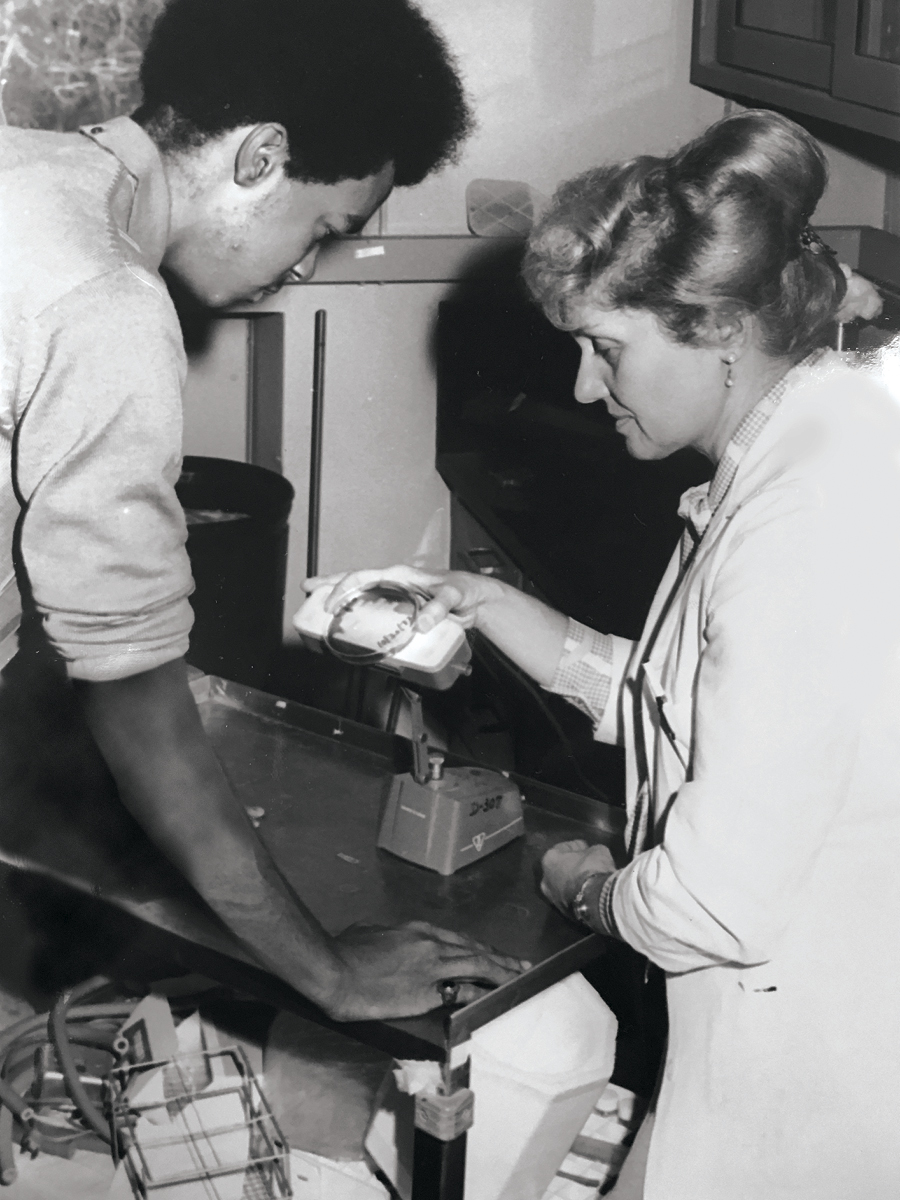
Helen Davies, PhD
“Call me Helen.” That’s how Helen C. Davies, PhD, professor of Microbiology, introduces herself to students. A woman who doesn’t believe in barriers between herself and the students, since 1993 she has lived among undergraduates in the Quad, a dormitory located 200 yards from the medical school’s Johnson Pavilion—the commute sometimes shortened by a lift from a custodian hauling away dorm trash on a golf cart. For over half a century, Davies taught cell biology and infectious diseases to more than 10,000 medical students—often through song in her classroom.
The daughter of a rabbi, Davies grew up in New York City. During World War II, she earned her bachelor’s degree in chemistry at Brooklyn College; she was 19 years old and the only woman in her class. Davies received her master’s degree in biochemistry from the University of Rochester in 1950, and then her doctorate in physical biochemistry from Penn in 1960. She has been at Penn ever since, becoming the first woman to receive a faculty appointment in the Department of Microbiology in 1965.
Some people develop mnemonics to memorize material. As a student, Davies composed rhyming songs. As a teacher, she sang to medical students to help them learn about pathogens. For example, “Leprosy,” sung to the tune of the Beatles’ “Yesterday”:
Leprosy,
Bits and pieces falling off of me
But it isn’t the toxicity
It’s just neglect of injury.
Suddenly,
I’m not half the man I used to be
Can’t feel anything peripherally
From swollen nerves, hypersensitivity.
Why don’t lerpae grow in vitro we cannot say
In vivo they grow very slow, once in 12 days.
Hard to get,
But the stigma hasn’t faded yet
Don’t keep an armadillo as a pet,
Don’t forget…
Or an excerpt from “Herpes Simplex 1 and 2” sung to Simon and Garfunkel’s “Sounds of Silence”:
Hello, herpes our old friend
Will be with us till the end.
‘Cause the virus softly creeping,
Left its gene while we were sleeping
Penn’s microbiology nightingale married Robert E. Davies, a biochemist and professor in Penn’s Veterinary School, who died in 1993. That’s when she moved into the dorms as the first woman faculty master, the top administrator on site, for Ware College House, leading the Women in Science and Infectious Disease programs.
A longtime advocate for minorities and women, Davies marched with Martin Luther King Jr. at Selma in the 1960s. From 1968 to 1976, she headed Penn’s High School Education Program, which helped bring disadvantaged students to university laboratories. Davies mentored minority students from Cheyney State College in a summer medical intern program and taught a 20-week biology course to African American gang leaders as part of the Urban Leadership Training Program. She also helped found the Association for Women in Science, the International Association for Women Biochemists and Biophysicists, and the Women for Equal Opportunity at the University of Pennsylvania. Davies received the Lifetime Achievement Award from Women of Color at Penn in 2004. She has served as the academic coordinator for the Department of Microbiology and Associate Dean for Students and Housestaff Affairs in the PSOM, focusing on the recruitment, mentoring, and retention of minority group members and women in biomedical careers.
Passionate about teaching, Davies won the school’s annual Excellence in Teaching Award 16 times. Upon receiving the 1977 award, she commented: “What I love is when you’re working up to an intricate concept and you pause and watch the light go on in the faces as they reach it themselves one by one. When the whole class has lit up, you know you’re a teacher.”
1962 | Penn pediatrician Elizabeth Kirk Rose, MD’26, INT’30, initiates a gathering of female medical students and alumnae at Penn, which later becomes the annual Women in Medicine Dinner. The event is named in her honor in 1998.
1964: Agent of Change and Changemaker, PSOM’s First African American Woman Graduate
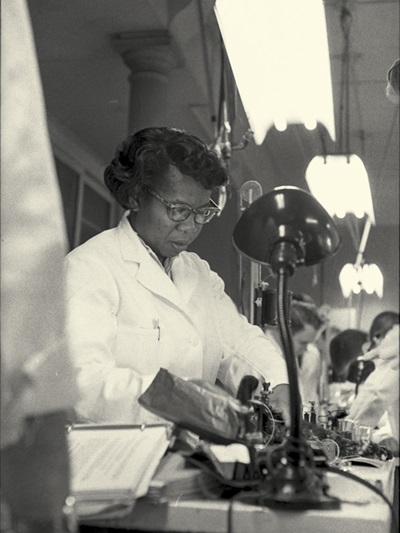
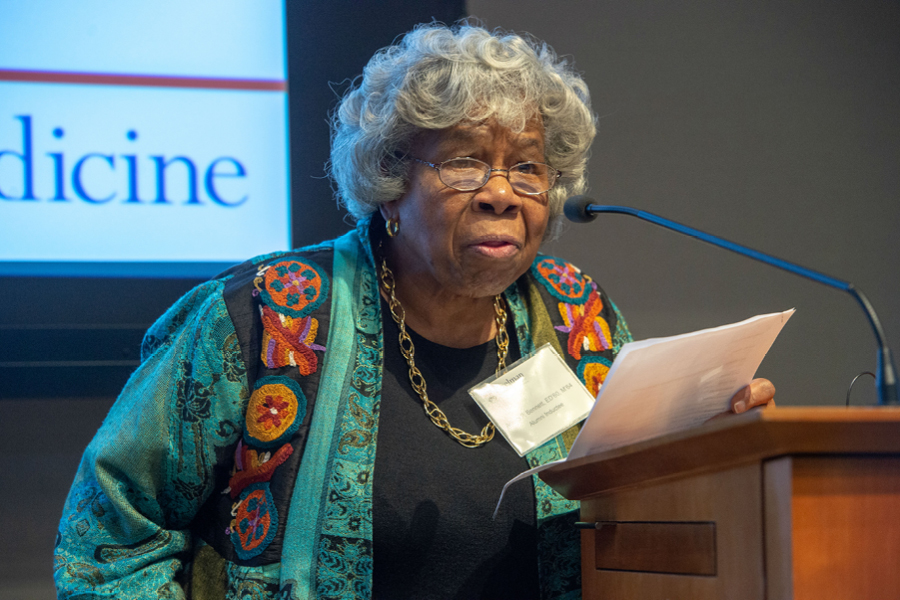
Arlene P. Bennett, MD
Born in West Philadelphia’s Women’s Hospital and growing up in the care of a female pediatrician there, Arlene P. Bennett assumed most doctors were women. At age nine, Bennett decided she, too, would become a doctor. When the time came, she realized the G.I. Bill was the only way she’d be able to afford college and medical school—especially with her sights set on the University of Pennsylvania. Three years in the U.S. Air Force as a radio mechanic made it possible to earn both those Penn degrees, the first in 1960. In 1964, Bennett became the first African American woman to graduate from the Perelman School of Medicine. Accepting the school’s Women in Medicine award 50 years later, she remarked, “Now it is a joy to see so many women, and so many women of color, among the ranks of students and recent alumni.”
Bennett was one of six women in her medical class, all very close, and the only woman of color. She recalls, “The fellows were very respectful and it was an unusual class, with a large number of good musicians. We’d go to a classmate’s parents’ apartment, have a chamber music group, and study for finals. We were not competitive.”
After an internship at Presbyterian Hospital, Bennett began her career in general pediatrics and worked as a school physician. She took off time when her husband did a postdoc at Yale and their son was born. Upon returning to Philadelphia—with the help of her mother who moved in with them for childcare—Bennett switched gears into psychiatry, completing a residency in 1977. “I was much more intrigued by people’s emotional states that seemed to be neglected and wanted to help underserved populations of color in psychiatry.”
Bennett started a solo private practice with an emphasis on psychotherapy. For several years, she also worked part-time in Community Mental Health at Pennsylvania Hospital, treating patients with chronic illnesses and severe mood disorders. Her approach to psychiatry: “I take my own personality and do it my way. If you don’t rule out underlying medical problems, you can’t solve psychiatric problems.” At any given time, she’s had a very racially and culturally diverse practice: people of color, white, Asian, and patients of less familiar religions that have kept her learning.
Actively involved in her East Mount Airy community, Bennett takes great pride in the work she and neighbors did to protect prime parkland from development. Though Bennett is too humble to mention it, East Wissahickon Park, the six-acre park acquired by the City of Philadelphia, also bears the name Arlene Bennett Park.
1963 | The Equal Pay Act prohibiting sex-based wage discrimination between men and women performing the same job is signed into law.
1964 | The Civil Rights Act is signed into law, with Title VII banning employment discrimination based on race, religion, national origin, or sex.
1970 (HUP), 1972 (Nursing) & 1976 (SOM): The Nurse-Turned-Doctor Who Empowers Women’s Health
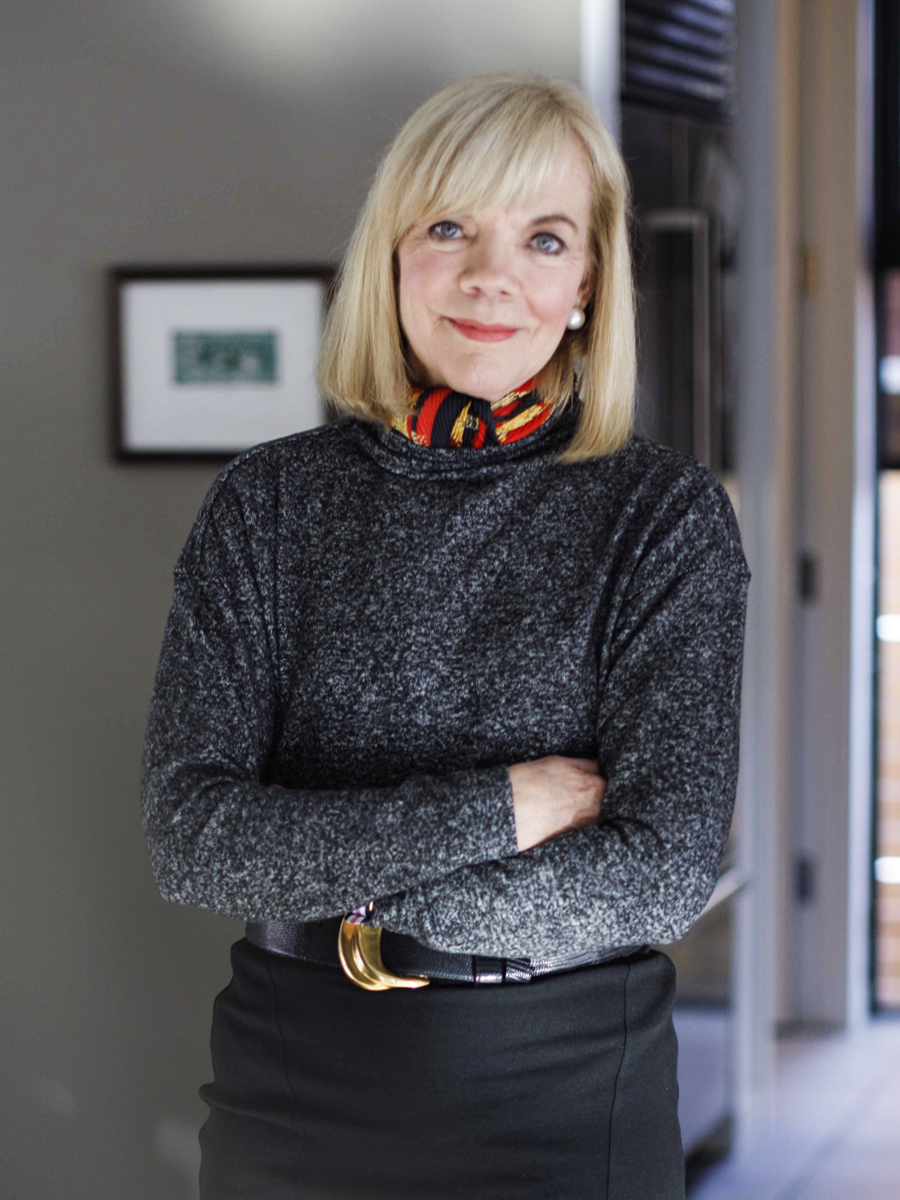
Marie Savard, MD
It didn’t take long after becoming a nurse that Marie Savard knew she wanted to be a doctor. “One night, a patient in the surgical ICU was having seizures. I knew he needed Valium, but I had to get a doctor’s order to inject it,” she recalls with frustration. “Why was I taking orders when I could give orders?”
Following in her mother’s footsteps, in 1970, Savard had graduated from HUP’s Training School for Nurses (discontinued in 1978). After the epiphany in the ICU, she attended Penn’s School of Nursing to attain the bachelor’s degree and pre-med courses she needed to apply to medical school.
The ‘70s were interesting times for women in society and at Penn. The women’s movement and laws against gender discrimination opened more doors to medical school, but not without growing pains. During Savard’s application interview, a male professor inquired about her plans to manage family and her profession. She recalls words of advice received soon after from her professor, Helen Davies: “You have to work harder and be smarter to open doors.” And protest when necessary. Savard remembers, “a lecture during which the professor presented a slide of a Playboy centerfold with her anatomic parts labeled. We women walked out of the lecture hall en masse.”
The Class of 1976 was among the last to rotate through Philadelphia General Hospital, where Savard had her first clinical course. “I knew how to talk to patients and make them comfortable, thanks to nursing.” She graduated at the top of her class of 155 students, of which 24 (15 percent) were women. Savard remained at Penn for an internship and residency in internal medicine with only one other woman; the program opened up to women on a much larger scale the following year. That first year, she had another life-changing moment in an ICU: Savard got to know her future husband, fellow intern Brad Fenton, MD, over a case of Legionnaires’ disease. They both pursued fellowships in general internal medicine at the University of Colorado; before long they had a son followed by twin sons.
General internal medicine offered Savard a holistic approach to medicine that aligned with her nursing roots. She joined a practice at Pennsylvania Hospital at a time when women’s health, not just OB/GYN, was gaining attention. That focus led to directing her own practice, the Medical College of Pennsylvania’s Center for Women’s Health, and emerging as a media personality as a go-to person about women’s health. She developed a national audience with “Ask Dr. Marie,” a column for Woman’s Day magazine that morphed into a blog, a book about how to manage your own health care, and TV appearances.
With her focus now fully on her public outreach and education, Savard misses the one-on-one practice of medicine, but feels good about her impact and influence on others: having mentored students to approach their patients holistically, and continuing to empower patients to seek information, think for themselves, and have a say in decisions affecting their health care.
1972 | Title IX of the Education Amendments guarantees women equal access to any education program or activity receiving federal funds.
1980: An Unstoppable Interventionist
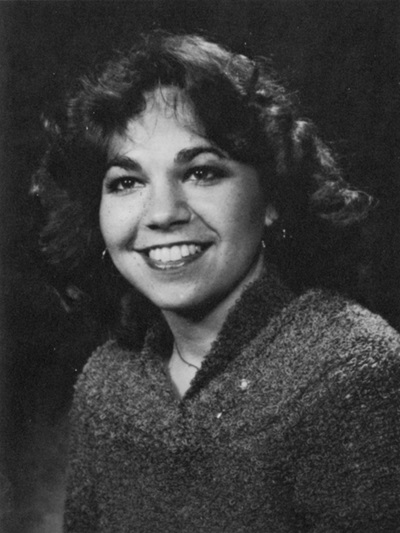
Marcelle J. Shapiro, MD
Marcelle Shapiro grew up in suburban Philadelphia. The whole family pitched in at the family business selling furniture and appliances, heeding her father’s guidelines: “Listen to what the customer is saying, be helpful and respectful.” Shapiro would live by those words as an interventional radiologist for much of her career and as a mentor.
After completing undergraduate studies at Temple University, as well as graduate work in neuro-anatomy and neurobiology, “I considered veterinary school, but sick animals made me very sad,” Shapiro says. Instead, she matriculated at the PSOM in 1976, on the tail end of the nation’s summer bicentennial celebrations. Her class consisted of roughly 25 percent women, who supported each other through the Women in Medicine program and informally. They had a limited number of female mentors who championed them: Helen Davies, Anna-Marie Chirico, MD, Diane Jorkasky, MD’77, FEL’83, and Gail Morrison, MD’71, FEL’76. Although one Graduate Hospital surgeon declared, “I won’t have the fairer sex on my service,” Shapiro generally felt accepted by male faculty members.
Her internal medicine residency at Penn opened Shapiro’s eyes to diagnostic angiography and interventional radiology (IR). The combination of doing something therapeutic and diagnostic appealed to her, which led to a second residency in diagnostic radiology and a fellowship in IR at HUP. “At that time, just a few women around the country were doing IR; it was generally considered a macho field,” explains Shapiro. The dearth of women in IR stemmed from their own concerns about radiation exposure during procedures done under X-ray guidance and practices’ hesitancy to hire women because of pregnancy potential.
In 1987, Shapiro and three male colleagues organized the Cardiovascular Interventional Radiology division at Jefferson University Hospital. As the first woman in IR at Jefferson, she recalls, “Several senior physicians did not realize I was one of the IR doctors.” After several years in academic practice, Shapiro wanted to start a family and needed to tackle the issue of radiation exposure during pregnancy because sitting out for nine months was not an option. “I worked with the radiation safety officer and devised a maternity lead apron that could expand to protect the baby as my abdomen grew.”
Shapiro was working at Jeanes Hospital when, in early 2010, she found herself on the other side of the doctor-patient experience. Diagnosed with acute myelogenous leukemia, she spent seven weeks in a drug-induced coma during chemotherapy treatment and then underwent a stem cell transplant.
After returning to health, Shapiro retired from clinical practice but not from three of her passions—medical education, the Perelman medical school, and advocacy for women in medicine. She has served as a preceptor in the Doctoring course, is vice chair of the Medical Alumni Advisory Council, and has participated in Penn’s Women in Medicine program throughout her career. The Perelman School awarded the 2013 Women in Medicine Award and 2015 Alumni Service Award to Shapiro, who remains deeply committed to the school “to inspire others, to give back and nourish my soul. These women and Penn Medicine have been an incredible lifetime gift.”
1980 | Margaret Gray Wood, MD, is appointed acting chair of Dermatology at Penn, the first woman to serve as acting chair of a School of Medicine department.
1990: Epigenetic Innovator
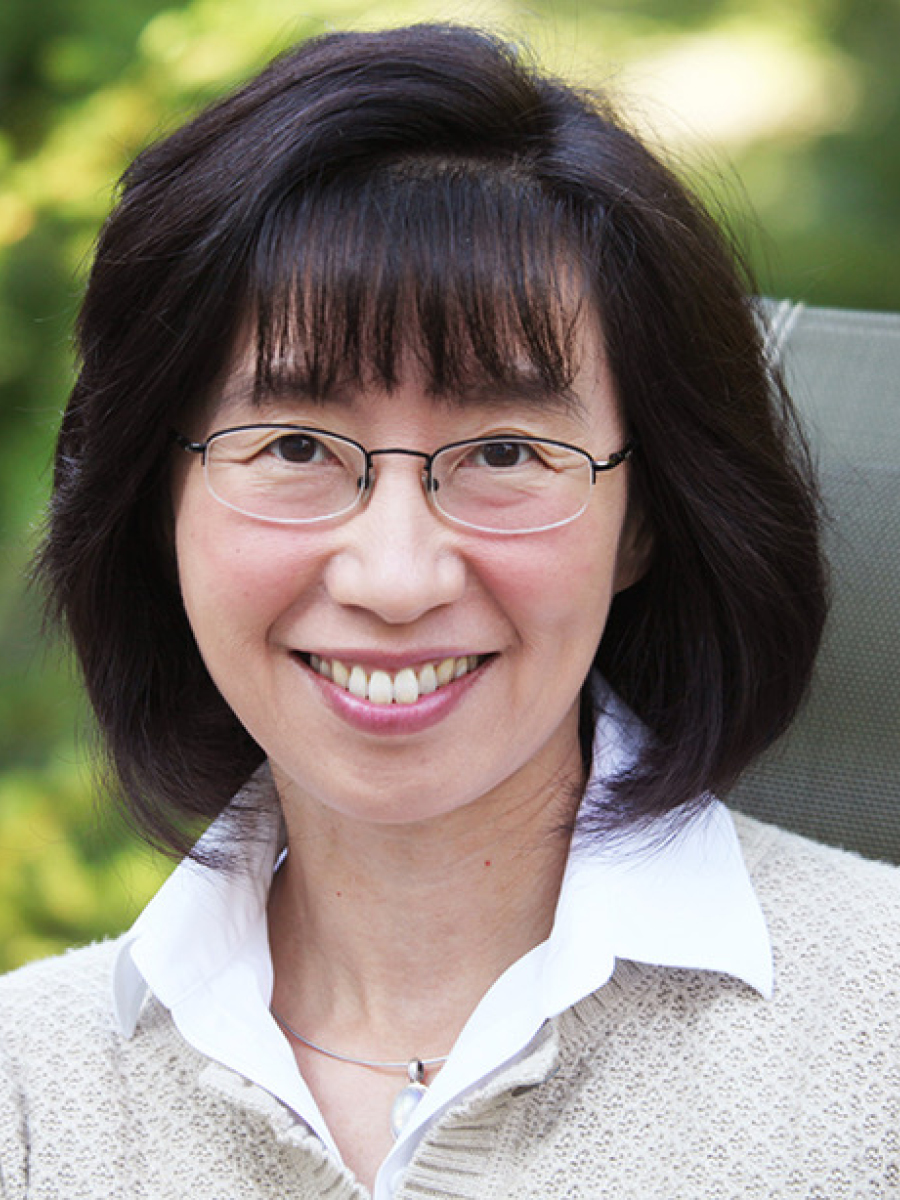
Jeannie T. Lee, MD, PhD
Jeannie Lee grew up in a medical family in New York and always thought she would do something in medicine. As a Harvard undergraduate majoring in biochemistry and molecular biology, she embraced research opportunities. Her interest in mechanisms of diseases brought Lee to Penn in September 1986 for the MD/PhD program, where she devoted her studies to epigenetics, which involves modifications of gene expression that do not involve alterations of the genetic code itself, including X-chromosome inactivation (XCI), the biological silencing of one X chromosome so there’s only one active X chromosome in each body cell of female organisms. Influenced by the work of Penn faculty including Robert Nussbaum, MD, on Fragile X Syndrome and Davor Solter, MD, PhD, on genomic imprinting, Lee says, “I would not be doing what I do today without this formative experience at Penn.”
Two decades after the civil rights movement, the late 1980s was a relatively good time to be a female medical student at Penn. Lee experienced “a real push in the ‘80s to make opportunities available for women. There were a lot of strong female role models in the genetics department.” That’s not to say everyone was without bias. She recalls that a fellow PhD student asked her, “If you had the choice, would you choose to be born a woman again?” Lee
ignored such comments and kept going. As a young scientist, she did not join women’s student organizations because she didn’t want to make a fuss about being female in a male-dominated world—while still acknowledging today that women in science and medicine face challenges at different stages in their careers, including a glass ceiling for successful senior women.
After graduating from Penn, Lee undertook postdoctoral work at the Whitehead Institute & MIT, and in 1997, joined the Harvard faculty to pursue her studies in XCI. She is currently professor of Genetics at Harvard Medical School, the Blavatnik Institute, and Massachusetts General Hospital. Her lab has been investigating how RNA interfaces with protein at each step of XCI and how to unlock the silent copy of each gene for therapeutic benefit. The basic science knowledge she’s pioneering offers hope for treating human disorders, particularly neurodevelopmental disorders and X-linked intellectual disabilities such as Rett Syndrome, Fragile X Syndrome, and CDKL5 Syndrome.
Lee is most proud of debunking the myth of “junk DNA,” i.e., non-coding DNA, thought to have no purpose. Her lab demonstrated that non-coding RNAs almost entirely control XCI, a discovery that revolutionized the field of epigenetics and earned Lee the 2016 Lurie Prize from the Foundation for the National Institutes of Health. She has also received the Molecular Biology Prize from the National Academy of Sciences, U.S.A., Penn’s Distinguished Graduate Award, election to the National Academy of Sciences, and other honors, in addition to serving as president of the Genetics Society of America. She is an inventor on 30+ patents and played a major role in founding two biotechnology companies to translate her discoveries into new therapeutics to treat human genetic disorders. She attributes her success in large part to her passion for science, a willingness to take risk, persistence, and—critically—the influential years at Penn.
1996 | The first women are appointed to serve as permanent PSOM department chairs: Priscilla A. Schaeffer, PhD, Microbiology, and Marjorie A. Bowman, MD, Family Practice and Community Medicine. For the first time, the incoming class of Penn medical students has more women than men.
Established in 1994

Waves of “angst and anger” punctuated the experience of 2020 for Michelle Johnson, PhD, an associate professor of Physical Medicine and Rehabilitation at the Perelman School of Medicine. Between COVID-19 and the uprisings sparked by the murders of George Floyd and Breonna Taylor, the year’s cataclysmic events have had a profound, disproportionate impact on Black Americans and people of color. For Johnson, juggling personal and professional responsibilities amid a pandemic became even more complicated—a struggle she saw reflected in her colleagues and students.
Though COVID-19 has prevented people from coming together in person during these hard times, there has been an outlet that Johnson has found “tremendously uplifting and helpful” as a Black woman faculty member: a series of virtual discussions launched by PSOM’s FOCUS on Health & Leadership for Women program. These sessions have covered the gamut of timely topics, including systemic racism and academic productivity—at a time when there are signs that the pandemic has placed special burdens on women that have impacted their careers. For example, a brief analysis of preliminary data published in The Lancet in June found that across disciplines, including medicine, women’s rate of authorship in academic journals has declined this year compared to 2019.
The sessions and their participants “demonstrated a genuine effort to try to understand, to query, and to figure out what substantive things we can do to make a difference, rather than just lip service,” Johnson said. “These FOCUS chats have made me feel hopeful.”
These sessions have provided a safe space for women faculty to share their struggles and crowdsource solutions while fostering a sense of community during an isolating time. They also reflect the core belief that permeates all FOCUS programming—that together, and with institutional support, women of all backgrounds, disciplines, and career stages can break through barriers and help each other advance.
FOCUS on Health & Leadership for Women
Stephanie Abbuhl MD, Executive Director
Hillary Bogner MD MSCE, Director of Research Programs
Bridget Keogh Dougherty MPH, Managing Director of Research Programs
Mira Mamtani MD MSEd, Associate Director
Susan Primavera, Director of Operations
Lucy Wolf Tuton PhD, Director of Professional Development
FOCUS, which completed its 25th year in 2020, supports the advancement and leadership of women in academic medicine and promotes research centered on women’s health and careers. In addition to capturing gender representation and advancement data in a biennial benchmark report, FOCUS provides support through community building and leadership training. Faculty and trainees at all levels in both clinical and research-oriented careers can participate in a wide range of career workshops, leadership seminars, and mentorship opportunities.
FOCUS hosts an annual professional development conference and regular hour-long lunchtime seminars on topics like imposter syndrome, authentic leadership, time management, work-life challenges, and trending health care issues. The Multi-Session Career Evolution Series also helps women manage challenges unique to their career stages. “We want to increase the proportion of women in traditional leadership roles, but we also want them to pave paths as leaders in innovative administrative, clinical care, education, research, government, and community positions,” said Stephanie Abbuhl, MD, FACEP, executive director of FOCUS—part of a multidisciplinary leadership team—and a professor of Emergency Medicine.
The program has also conducted multiple research efforts like the first-of-its-kind NIH-TAC (Transforming Academic Culture) Trial, which examined whether coordinated interventions could improve the productivity and job satisfaction of junior women faculty over a three-year period in a cluster-randomized design. FOCUS also brings in outside funding to finance programs like the Medical Student Fellowship in Women’s Health in which Penn medical students receive a stipend while working on women's health research. “It’s a triple win,” Abbuhl said. “The students get six months of mentorship and further expertise in the field; faculty members have students working alongside them to advance their research; and the field benefits from new investigations as well!”
Though she says there is more work to be done, particularly in the areas of leadership and salary equity, over the course of her 40-year career, Abbuhl has seen “steady and exciting changes” that have opened long-closed doors and allowed women and underrepresented minorities to bring their considerable talents to medicine with striking benefits for patients, education and research. “I believe that the atmosphere of academic medicine has never been more responsive and ready to create an environment in which every faculty member can thrive.”
— MaryKate Wust
2000: A ‘Can Do’ Biomedical Educator
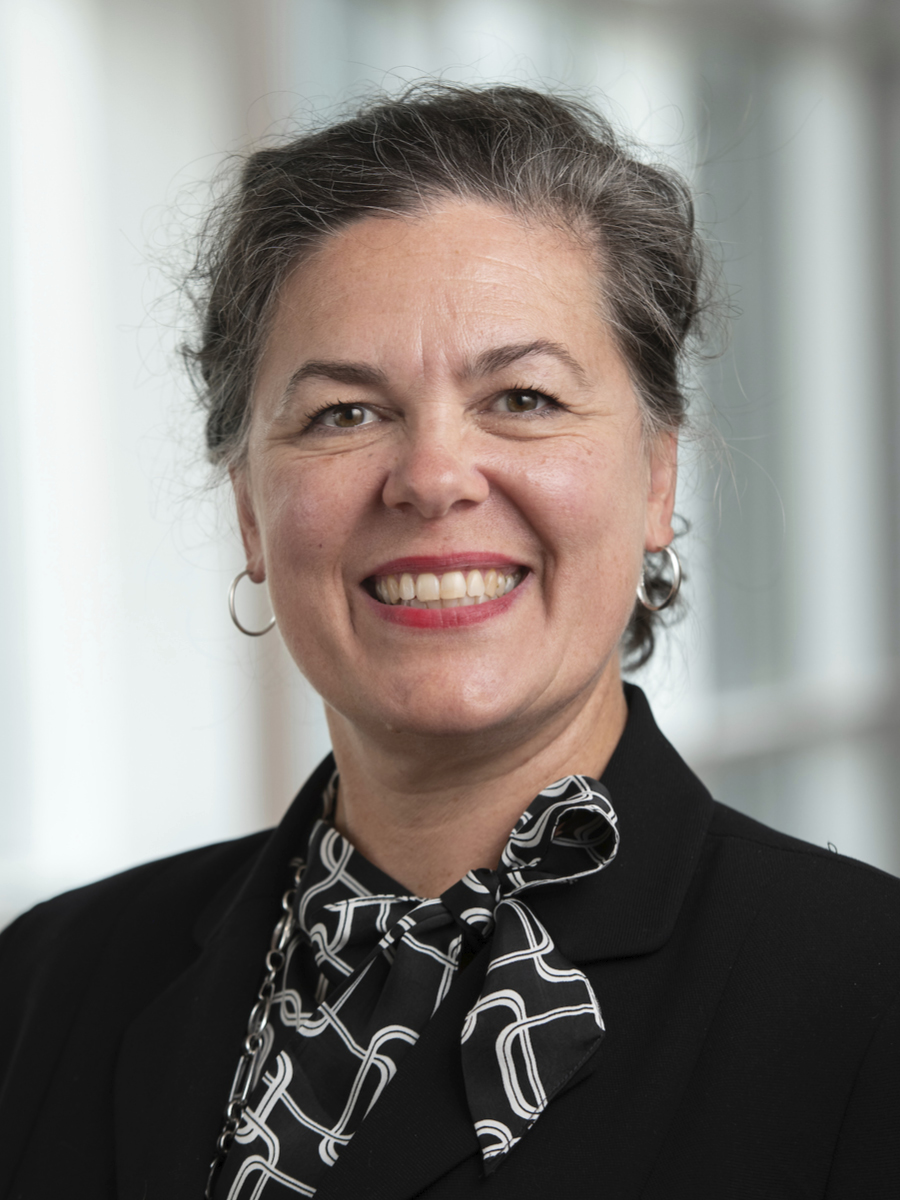
Julie Davis Good, PhD
The daughter of a third-generation brick mason and a beautician, Julie Davis Good grew up in rural Whitley County, Indiana, helping to tend a family garden and can yearly supplies of fruits and vegetables. She was valedictorian and one of only 15 of the 250 students in her high school class to attend college. At Hanover College, “I was a first generation college student when no one realized what that meant…and so I used my ‘can do’ attitude to work harder and longer to catch up with what my peers already seemed to know.” Her pre-med aspirations waned when she became involved with pharmacology research at Indiana University School of Medicine.
Good’s exploratory career has taken her full circle to her home state, where since 2018 she has been developing an undergraduate biology program at Indiana Tech—originally an engineering school.
Even before starting a doctorate in cell and molecular biology at Penn’s Biomedical Graduate Studies (BGS) program in 1992, Good made several stops along the way: graduate studies in microbiology and immunology at Emory University, service work with her church in Ecuador, a secondary education certificate, and teaching high school science in Atlanta.
At Penn, Good found tremendous leadership in classical virology and the advancing wave of molecular biology by Neal Nathanson, MD, and Susan Weiss, PhD. Good worked in Weiss’s lab on the mouse coronavirus, Mouse Hepatitis Virus, strain A59, more specifically on what the genome encoded and the protease that made functional coronavirus. “I can’t believe it was a virus like the one I was working on that we’re now seeing with COVID-19,” she says. In 1995, Good moved to the lab of James Hoxie, MD, where she studied HIV. Her thesis, “Molecular characterization of biological inhibitors of viral entry (HIV),” was, she says, “incredible formative training for a farm girl.”
Despite a fairly equal gender balance at BGS in the 1990s, Good faced additional challenges as a woman who’d made certain choices about family life. Pregnant in the spring of her first year, she kept it hidden through her preliminary/comprehensive exam. “Even at that point in my career, I had decided I wanted neither to be ‘passed’ because I was pregnant nor to be failed because of this choice.” By the time she defended her dissertation, while doing a postdoc at the CDC and working at biosafety level 3 on HIV/tuberculosis synergy, she was pregnant with her third child.
Good went on to coordinate and then run the University of Virginia’s medical microbiology program for eight years, plus a small research effort that studied the efficacy of the tuberculosis vaccine (BCG) for treating high-risk bladder cancer. In 2009, she joined Van Andel Institute in Grand Rapids, Michigan, as assistant dean and later associate dean of the Graduate School. There she organized a group of the Association of Women in Science. Her advocacy efforts extended to high school outreach programs, encouraging girls in STEM, the pipeline for future women in science.
Good regards her accomplishments as a scientist with modesty, but her numerous teaching awards reflect her dedication and impact as an educator and mentor. During the COVID-19 shutdown, that has meant working 16 hours a day preparing for and conducting virtual classes. “I don’t convey knowledge,” she says. “My goal is that my students learn how to learn.”
2004 |
FOCUS introduces the FOCUS Award for the Advancement of Women in Medicine. The first award goes to Lisa M. Bellini, MD, then associate professor, Department of Medicine.
2010: From Pirouettes to Pediatrics—and Pandemic Emergency Response
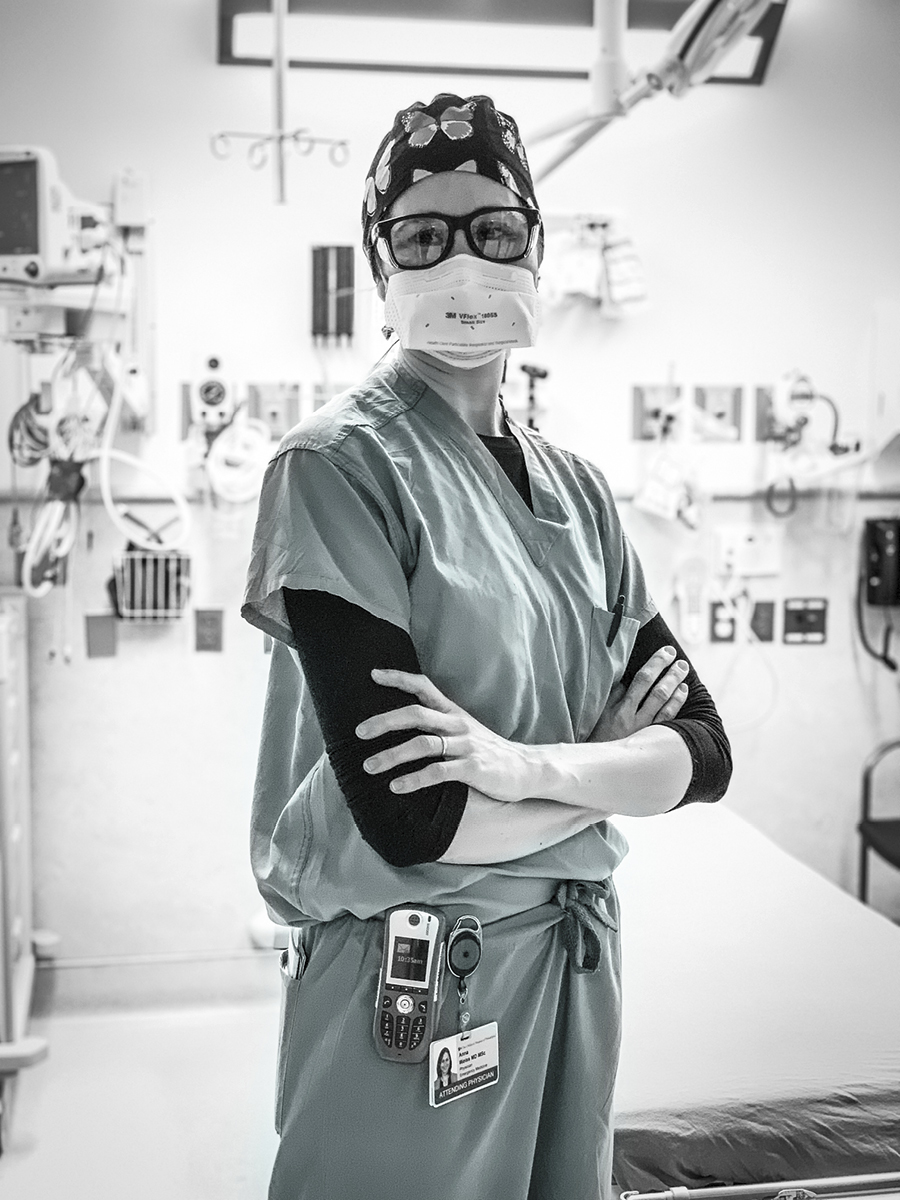
Anna Weiss, MD, MSEd
Anna Weiss had just begun a career as a professional ballerina when a serious injury changed her direction. Onward to Harvard for studies of Russian language, history and literature. Subsequently a Rhodes scholar at Oxford University, Weiss became interested in public health and human rights in the post-Soviet system, particularly the treatment of HIV-AIDS patients. That interest led her to field study in South Africa to learn more by working with a pediatric HIV program—and her direction changed again. “On the policy side, I was overwhelmed by how powerless I felt to affect lives on the ground and questioned the best path for me to make a difference,” she explains. That path led to PSOM in 2006, following a two-year interval for a pre-med, post-baccalaureate program and work with the U.S. President’s Emergency Plan for Aids Relief (PEPFAR) in Nigeria.
The medical school’s Doctoring course dedicated to humanism in the curriculum made a huge impact on Weiss, now a CHOP Emergency Medicine physician and a current Doctoring preceptor. So, too, did research mentor Samir Shah, MD, with whom she wrote her first, first-author paper. “He insisted that I run the statistical analysis myself and gifted me a sense of self-efficacy for which I will always be grateful. I very consciously try to pay this forward in my own teaching practice—giving learners autonomy to make mistakes from which they will grow, while setting safe guardrails that protect both them and their patients.”
The roles of physician and mother have always gone together for Weiss, who married and gave birth to the first of three children while a medical student; her son was 10 weeks old when she started her intern year at CHOP.
Weiss knew she wanted to work in pediatrics since working with PEPFAR. Although she assumed she’d focus on infectious diseases, “the first time I rotated through the ED, I knew those were my people.” Weiss loves being a West Philly community emergency medicine doc, cracking a new diagnosis, providing care for local children and their families, and being at the front line of a highly specialized quaternary referral center. “We have the privilege of caring for families in their most vulnerable moments, so there can be an emotional toll when we are communicating unexpected or crushing news.”
Passionate about medical education, Weiss earned a master’s in Medical Education at Penn in 2018. Now as associate director for education in the CHOP ED, she oversees curricula for multiple learner groups and serves as the educational interface between the ED and the rest of CHOP. “Teaching is one of the most rewarding parts of my job—not only bedside teaching, but medical education as a scientific discipline.” Her credo as an educator: “Be willing to say you don’t know the answer and embrace not knowing as a gift to spur you onward rather than an obstacle to overcome.” Sort of like putting the pointe shoes away and leaping in a new direction.
In March 2020, Weiss joined thousands of health care workers, including her husband, a Temple University emergency medicine physician, in unchartered waters of the front lines of the COVID-19 pandemic. She calls the experience a privilege. “While there is a palpable sense of anxiety among both the care team and patients in the ED these days, I am so proud of—and impressed by—the way that Philadelphia’s health care teams have risen to meet this remarkable challenge,” she says. “On the home front, we are facing the reality of parenting in a two-front-line physician household. We have weighed the risks of both caring for COVID+ patients, but feel strongly that each of us belongs in our respective EDs and with our respective teams right now. This pandemic is Emergency Medicine's moment, and we are grateful to be a part of it.”
2010 |
Women substantially outnumber men in this year’s PSOM graduating class: 80 of 145 newly minted MDs.
2020: Aspirations in Global Health, Graduation in a Pandemic
Hanna Elmongy, MD
An Egyptian American, Hanna Elmongy grew up in a bilingual household in New Orleans and then Philadelphia. Her family spent time in Egypt, staying connected with their Egyptian relatives and culture; the visits also fostered Elmongy’s proficiency in Arabic. This cultural and language experience would help shape her path. So, too, did Elmongy’s parents, both of whom studied science. Her father, an oncologist, “went above and beyond for his patients, keeping their humanity at the center of their care,” she explains. “He motivated me to see the kind of impact you could have on people.”
As a Penn undergrad (SEAS’15) studying chemical and biomolecular engineering, Elmongy wanted to learn how the natural world works and use that knowledge to benefit people. She also genuinely likes talking to people, hearing their problems—hence, medical school.
Elmongy entered the Class of 2020, in which 88 out of 162 graduates (54 percent) were women. Despite women outnumbering men—and the presence of many more women faculty—Elmongy still sees subtle differences in the male/female experience. “It seemed easier for men to say something, to project confidence, and be taken seriously. We had to work on projecting ourselves in a certain way to be taken seriously.”
In her first year, Elmongy met Alexandra Vinograd, MD, a CHOP emergency medicine physician who had volunteered in refugee camps in Greece. In the summer of 2017, Elmongy joined the Syrian American Medical Society in Greece, where a group of volunteers running primary care clinics in refugee camps needed interpreters. The Arabic language she’d learned as a child proved invaluable. So, too, did the experience. “It was life changing. It triggered me to pursue global health in my career and give back to communities. I want to learn more about public policy and population level public health, someday make more big picture decisions.”
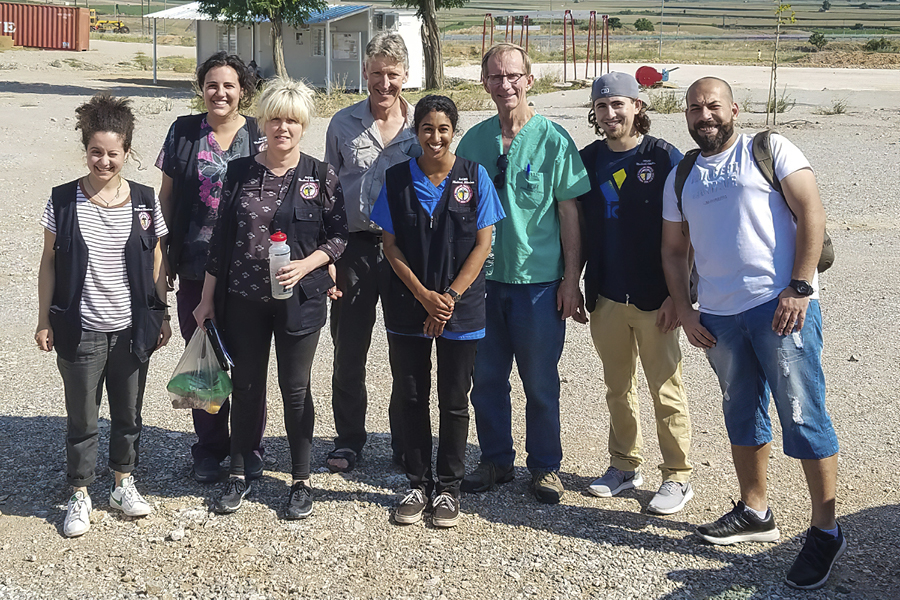
Meanwhile, Elmongy was also giving back to communities locally. She established a Muslims in Medicine group at Penn that has attracted Muslim and non-Muslim participation and support. She has worked on stress relief workshops for Syrian and Congolese refugee women struggling to navigate their way in this country, nutrition workshops for West Philadelphia residents, and the Alianza seminar series on the Cuban health care system. For her big heart and outreach efforts, Elmongy was inducted into the PSOM’s Gold Humanism Honor Society.
In the final semester of her fourth year, the COVID-19 outbreak hit—and changed the landscape rapidly. “It went from being a nuisance preventing my international rotation and last requirement of med school to a very real fear as I began to know of friends of friends falling ill—both young and old,” Elmongy reflects. “I’ve had to mourn the idea of what my fourth year would look like as rotations, then Match ceremony, then graduation got cancelled, and I realized there were friends I might not see again for a long time. But simultaneously I feel so grateful that that is all I have to endure: that I and my family are healthy and safe.”
Elmongy is now training at Massachusetts General Hospital for a residency in medicine and pediatrics. She believes that understanding disease systems of both children and adults will make her the most versatile and useful in her future role in global health care. Though becoming a physician during a global pandemic is frankly scary, Elmongy says, she also reminds herself that medicine is a calling: “Medicine gives me purpose and feels like the most impactful way I can serve those around me. I worry about how this pandemic and the aftermath will disproportionately affect the most vulnerable of patients—those who are poorer, those with limited English proficiency—and it renews my motivation to work for them.”
2020 |
Of the PSOM’s 162 graduates, 88 (54 percent) are women.